5 Real Hazards of Air Travel
Lift-Off
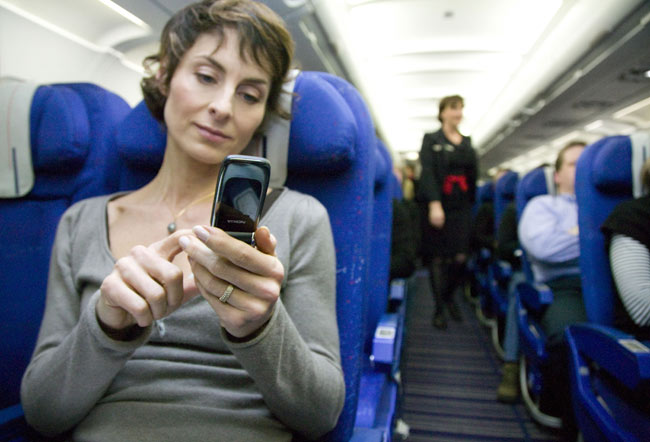
Much ado has been made over possible health risks from full-body scans at the airport. Yet the radiation dose is negligible from the two types of machines now being installed at U.S. airports: the millimeter-wave scanner, with its low-energy radio waves about as harmful as a flashlight; and the backscatter X-ray machine, with X-rays so weak that they can't penetrate and instead bounce off the body — hence the "backscatter" effect to reveal a non-bodily object.
If there is any health concern here, it is the mental anguish that scanner operators suffer from seeing so many near-naked bodies of unshapely Americans.
Most travelers unknowingly assume far greater risks. Flight crews and frequent flyers are susceptible to a host of health problems, from cancer and cardiovascular disease, to vision and hearing loss, to mental disorders and cognitive decline.
You might be able to think of a few tangible deadly risks, perhaps either homicide or suicide or both if that screaming kid behind you doesn't stop kicking your seat. The following list describes real hazards of flying, each posing risks that dwarf any danger presented by a body scanner, a creative taxi driver, or a $7 airport hotdog.
Disease
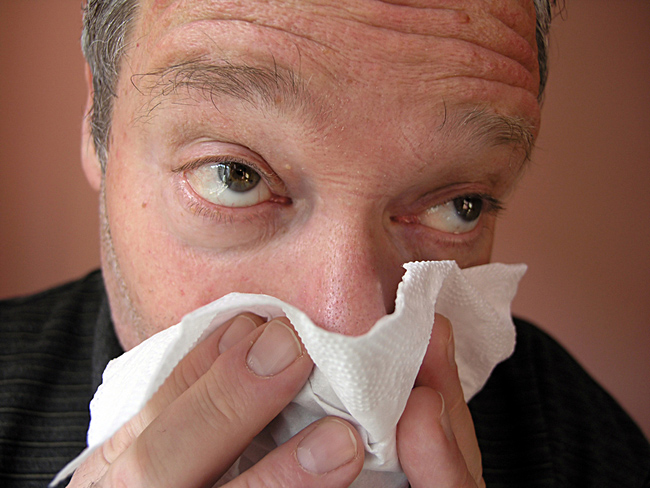
Most folks know they are quite likely to get a cold or pick up some kind of bug while traveling via airplane. The cause is a combination of the low humidity on the flight, which dries up the natural defense mechanism offered by mucus, and a lot of strange people from around the world cramped into the tin box we call an airplane infected with who-knows-what.
The increased risk catching a cold is high — over 100 times higher than not flying, according to a 2004 study in the Journal of Environmental Health Research — but the impact on your long-term survival is low. Popping vitamin pills or candies with zinc or echinacea marketed as a prophylactic is of little use, by the way.
More serious disease risks include food-borne illnesses on the flight or at your destination, and poor climate acclimation, which happens when you leave your comfort zone for extreme heat, cold, humidity, or altitude. Poor acclimation can lead to anything from nausea and general malaise to sudden death.
Most of these airplane and travel hazards in this list affect only the frequent flyer. The occasional and often naive flyer, however, remains at high risk for serious illness brought about by the sudden change in local environment — be it the airplane cabin, with its low humidity and air pressure equivalent to that on a mile-high plateau, or the destination, with potentially radically different food, water and temperature.
The real risk for humanity and not just the passenger — thus making this the No. 1 air travel hazard — is the potential for a pandemic. Nearly every case of polio and measles in the United States involves air travel, with the scenario of an infected person coming to the United States and spreading the disease among adults and children who are not vaccinated for whatever reason, God love them, or the aforementioned non-vaccinated individual picking up the disease abroad.
Air travel is here to stay, so the best solution is to be sure that vaccination is also here to stay.
Economy-Class Syndrome
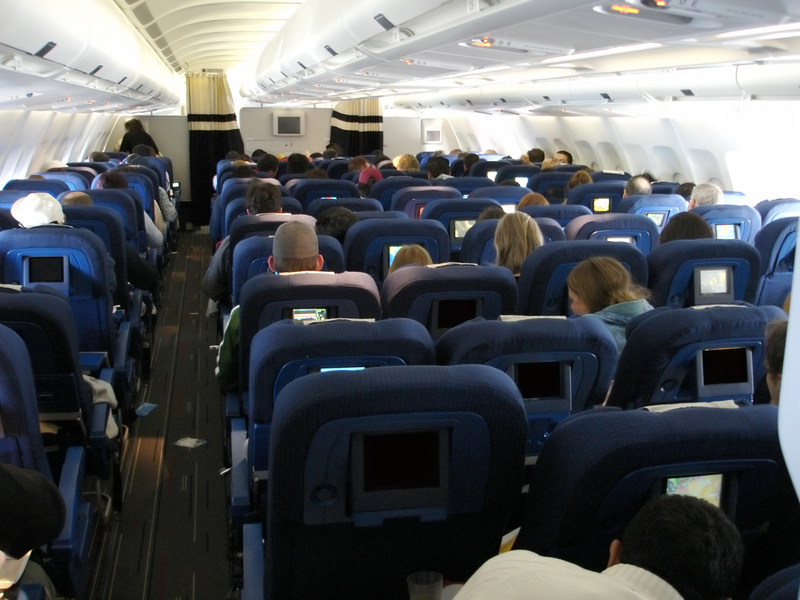
Sitting in cramped conditions for a long time is more than an uncomfortable nuisance; it can kill you by causing blood clots to form, usually in your legs, which then can travel to your lungs and cause a pulmonary embolism.
The medical term is traveler's thrombosis, which causes deep vein thrombosis (DVT). The common term is economy-class syndrome because, while you can get such clots in first class or even in an automobile, the measly 13 millimeters of extra leg space between your knees and the fully reclined seat in front of you in the coach section doesn't help matters.
Traveler's thrombosis is nothing new. The New England Journal of Medicine reported on this back in the 1950s. Sadly, airport seating has gotten tighter and tighter as Americans have gotten larger and larger. Risk factors are many and include obesity, recent surgery, poor circulation, heart disease, middle or old age, and oral contraception or pregnancy (it gets you either way).
Clots can form during or up to 30 days after travel or any period of immobility, and most clots dissolve on their own. So the true incidence of DVT from air travel is not known. Only about 20 cases of traveler's thrombosis clearly from air travel leading to a pulmonary embolism are reported per year. One small study from New Zealand published in the journal The Lancet in 2003, however, found that 1 percent of travelers developed clots. With about 2 billion air travelers annually, that extrapolates to 20 million DVT cases, likely leading to at least thousands of deaths.
Your only protection is wearing loose clothing, drinking lots of water, walking around the cabin, and stretching — or being able to afford the luxury of sleeping horizontally in first class.
Noise-Induced Hearing Loss
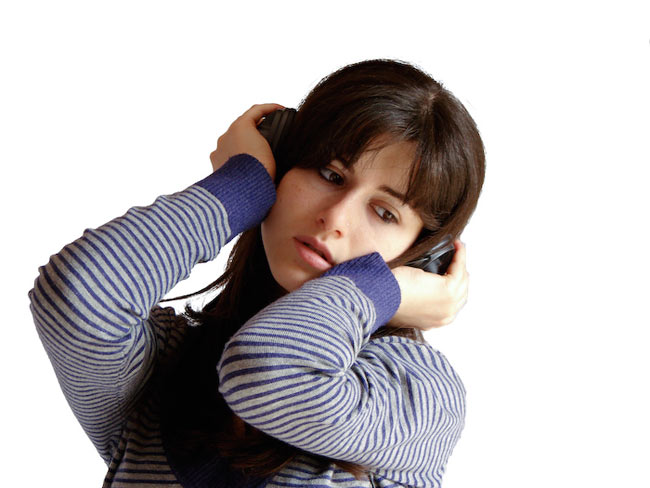
Can we fly silently? Such is the title of an article in the magazine Popular Science. Seeing how the issue is from October 1947 and how the level of decibels remain nearly as high over 60 years later, the answer is no. The Popular Science article detailed efforts to get noise levels below100 decibels in the back of the cabin. For reference, a nightclub is in the 100-decibel range. Heavy traffic is around 80 decibels. Normal conversation is at 60 decibels. And the airplane cabin ranges from about 75 decibels in the front to 85 decibels or higher in the back (where the plane’s engine is located). Some back rows clock in at 100 decibels.
During any flight that’s more than four hours, depending on where you are sitting, you are at the threshold for exposing yourself to permanent hearing loss. The more you fly, the greater your risk of noise-induced hearing loss. The occupational safety limit set by the National Institute for Occupational Safety and Health (NIOSH) is 88 decibels for four hours and 85 decibels for eight hours. The passenger stuck in the back is actually at greater risk for hearing loss that the flight attendant, who has the freedom to move around.
Making matters worse, passengers in such a loud environment tend to adjust their earphones an extra 5 decibels above the ambient noise to block it out, according to a study published in 2009 in the journal Perspectives on Audiology. The good news is that noise-reducing headphones, should you be able to afford them, can cut noise by up to 40 decibels.
Note also that the ear pain associated with air pressure changes rarely leads to permanent hearing loss. It's possible, but such examples become "case studies" in the medical literature.
Jet Lag
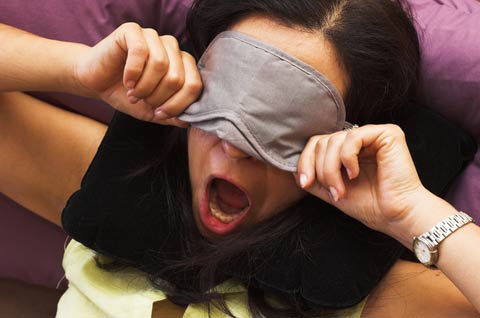
Perhaps the human body wasn't designed to leave Tokyo at noon on a Tuesday and arrive in Washington, D.C., 12 hours later... at noon on a Tuesday. A study published in the journal The Lancet in 2007 — a meta-analysis of more than 500 studies on aviation and health — found that consistent disruption of body rhythms from jet lag and travel fatigue can lead to cognitive decline and psychotic and mood disorders, sleep disorders, and possible heart disease and cancer. The health risk seems to mirror that of long-time nightshift, or graveyard-shift workers.
Short-term problems from jet lag include the obvious fatigue and loss of concentration but also irritability and loss of appetite. Long lines at security at the terminal and the stale dinner rolls on the airplane don't help matters much.
Cosmic Rays
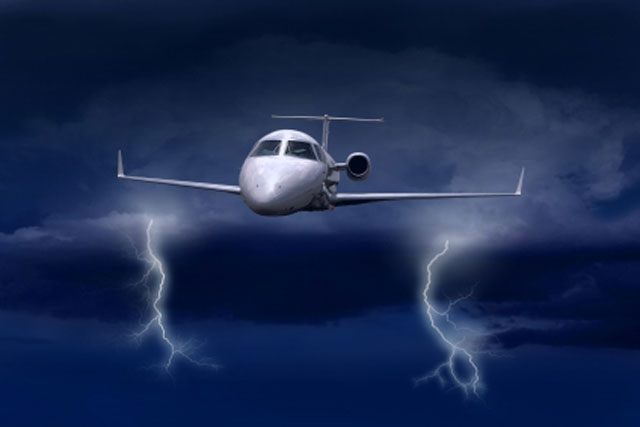
Take a full-body scan and multiply it a few thousand times. On most international flights, you are exposed to a not entirely insignificant dose of radiation from cosmic rays, which are energetic particles from space, mostly protons. The longer the flight — and subsequently the higher and closer you fly near the North Pole, the greater the dose. On a roundtrip flight from Washington, D.C., to Beijing, for example, you easily exceed the 100-microSievert dose you would get from a chest X-ray.
People most at risk are those who fly for a living, that is, the pilots and flight attendants. Cancer rates such as that of breast cancer among flight personnel are slightly higher than in the general population. But doctors aren't sure whether the increased cancers are from cosmic rays or ... from the next item in this list, jet lag.
Sign up for the Live Science daily newsletter now
Get the world’s most fascinating discoveries delivered straight to your inbox.

Christopher Wanjek is a Live Science contributor and a health and science writer. He is the author of three science books: Spacefarers (2020), Food at Work (2005) and Bad Medicine (2003). His "Food at Work" book and project, concerning workers' health, safety and productivity, was commissioned by the U.N.'s International Labor Organization. For Live Science, Christopher covers public health, nutrition and biology, and he has written extensively for The Washington Post and Sky & Telescope among others, as well as for the NASA Goddard Space Flight Center, where he was a senior writer. Christopher holds a Master of Health degree from Harvard School of Public Health and a degree in journalism from Temple University.










